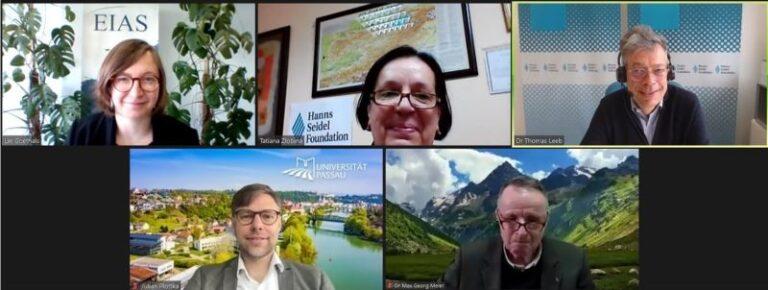The second edition of the “Year Book on Migration in Central Asia 2022-2023” was published by the American University of Central Asia with the support of the Hanns Seidel Foundation. The report monitors the development of migration policies trends in the Central Asian countries and Russia and includes recent events in Afghanistan, Kazakhstan, and Ukraine. The periodic publication of the report enables the dynamic tracking of migration changes in the region, facilitating comparisons both over time and across different countries. The European Union, being the number one donor in the region, has been following developments very closely. The EU strategy on Central Asia of 2019 underlines the importance of enhancing cooperation on migration and mobility. Moreover, both parties increasingly cooperate through several projects under the EU Global Gateway Initiative. In this context, the discussion touched upon tquestions such as: What migration trends are there in Central Asia? Are there similar trends in Europe? Which events facilitate/boost migration? What are the prospects for relations between the EU and Central Asia, in particular with regard to migration?
On a first glace it might be a little bit difficult to link the study to Europe since migration trends in Europe and Central Asia differ. However, as migration is a global phenomenon it requires cooperation on a global scale. The study touches on how conflicts and geopolitical changes are shaping migration patterns in Central Asia. One focus can certainly be the effect of the Ukrainian war. It has led to both Russians leaving Russia and refugees from Ukraine arriving in Russia. Moreover, the study gives insights into migrants’ remittances and labor migration. In the coming years, labor migration to Russia from Central Asian countries is likely to continue due to a shortage of labor in Russia (among others because of the Ukrainian war) and, therefore, laws regarding migration are expected to become more flexible, making it easier for migrants (also for women). Another point of interest is certainly the influence of refugees from Afghanistan on the region.
Some takeaways from the discussion:
- Remittances remain a crucial issue for Kyrgyzstan, Tajikistan and Uzbekistan making all three countries vulnerable to external shocks
- Internal Migration from rural areas to urban centers is driven by social inequality and needs to be addressed
- Afghan citizens continue to flee their country to Central Asia to continue their way to the West, which has to live up to its responsibilities caused by its intervention in the country south of Central Asia
- Labour Rights of migrant workers remain limited in the recepient contries Kazakhstan and Russia. However, due to the geopolitical conflict with Russia, the EU has limited options to address this challenge.
The Migration Yearbook of Central Asia of the Hanns Seidel Foundation can be found here

